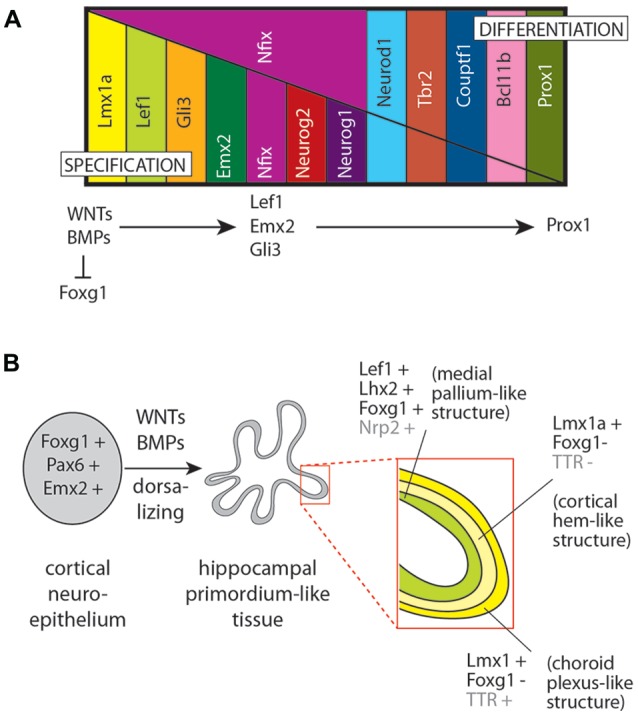Figure 4.

A hierarchy of factors involved in DG development in vivo and in culture. (A) Expression of a series of transcription factors during specification and then differentiation of the DG. Although a strict hierarchy of regulators serially activating each other is not yet available, the general rule that WNT and BMP ligands are requested to repress cortical specification (as indicated by forkhead box G1 (Foxg1) expression) and to confer DG specification (as indicated by Lef1 and Emx2 expression), which in turn are requested for downstream differentiation of DG granule cells (specifically expressing prospero homeobox 1 (Prox1)). (B) Application of the principle shown in (A) to the development of hippocampal organoids in culture. Embryonic cortical neuroepithelium (typically expressing Foxg1, Emx2 and paired box 6 (Pax6); left side) is treated with WNT and BMP ligands to give rise to a hippocampal primordium-like tissue (center) with layers (right side insert) showing transcription factor gene expression specific for the medial pallium, the CH and the ChP (as indicated; based on data from Sakaguchi et al., 2015; the genes Nrp2 (neuropilin 2) and TTR (transthyretin) are not transcription factors but they show region-specific expression useful to identify anatomical structures).
